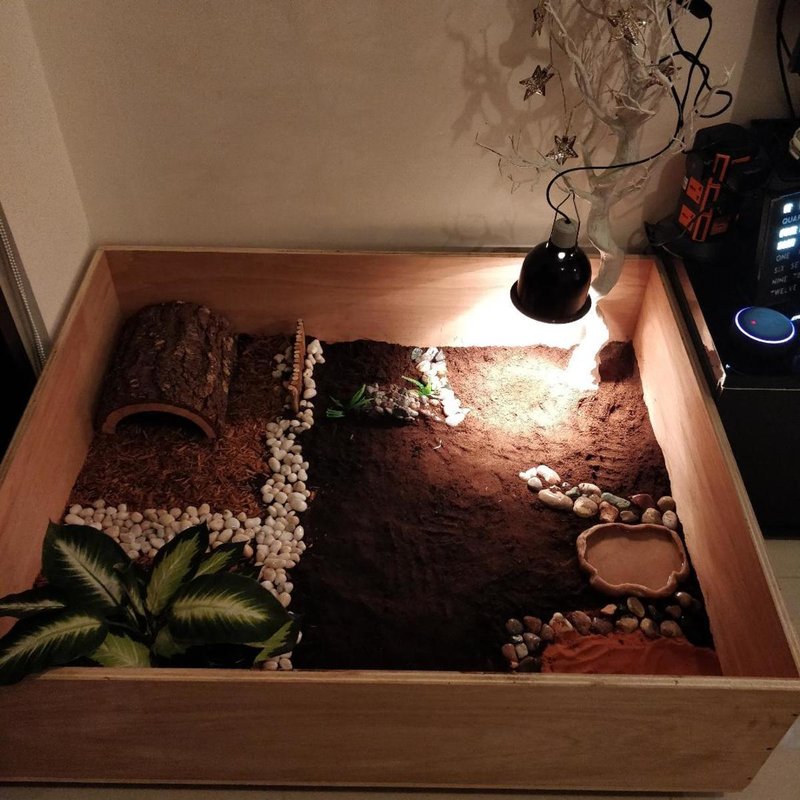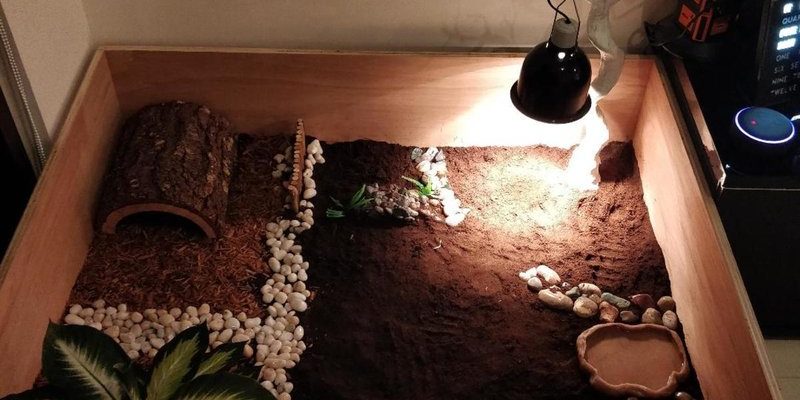
Creating the perfect setup isn’t just about aesthetics—it’s about their health and happiness. Imagine crafting a little piece of nature just for them, where they can bask under the sun, explore textures, and munch on fresh greens. So, if you’re ready to give your tortoise a home they’ll love, let’s dive into how to set up their enclosure the right way.
Choosing the Right Size for the Enclosure
One of the first things you’ll want to consider when housing your Greek tortoise is the size of their enclosure. A general rule of thumb is that the enclosure should be at least ten times the length of the tortoise. For example, if your tortoise measures 6 inches, the enclosure should be at least 5 feet long! This may sound huge, but trust me, they’ll appreciate every inch.
Also, think about vertical space. While Greek tortoises aren’t climbers, adding some layers, such as small hills or logs, can help create a more stimulating environment. This setup encourages them to explore and exercise, which is key to keeping them healthy and happy.
In cases where outdoor space is limited, a large indoor pen can work just as well. Just make sure it allows for plenty of room to roam. You might be wondering, “Can I just use a smaller enclosure?” Well, you could, but do you really want your tortoise to feel like they’re living in a shoebox?
Outdoor vs. Indoor Enclosures
When deciding between an indoor or outdoor enclosure for your Greek tortoise, you’ll want to consider their needs and your climate. Outdoor enclosures are fantastic for sunny days, allowing your tortoise to soak up natural sunlight, which is vital for their shell and bone health. Creating a secure outdoor space also lets them explore their natural instincts. Just be sure to have some sturdy fencing to keep them safe from predators.
On the flip side, indoor enclosures can be great options, especially in colder climates or during winter months. You can create a little tortoise paradise indoors with the right setup. Think about using a large, clear container or a homemade wooden pen filled with all the essentials. Just remember to supplement their light needs with UVB lighting—this mimics the sun and is crucial for their health.
Both setups can work well, but you might find that a combination of the two offers the best of both worlds. Just make sure whatever you choose has plenty of space to roam and explore!
Essential Features of the Enclosure
Now that you have a size and location figured out, let’s talk about what goes inside the enclosure. Your Greek tortoise will benefit from a few key features:
- Shelter: Create a cozy spot for your tortoise to retreat to. This can be as simple as a wooden box or a commercially available hide. It should be dark and quiet, giving them a sense of security.
- Basking Area: Every tortoise loves a good sunbath! Set up a spot where they can bask under a heat lamp or in direct sunlight during the day. This area should be warm and dry, allowing them to soak in the rays.
- Plants and Hiding Spots: Use safe, non-toxic plants or rocks to create some texture. Tortoises enjoy exploring and foraging. Having places to hide encourages natural behavior and keeps them stimulated.
- Water Dish: Don’t forget a shallow water dish! Greek tortoises need access to fresh water daily. It’s also nice for them to soak occasionally, especially in warmer climates.
These features will help create a comfortable and safe environment for your tortoise. Honestly, it’s about making a space that feels like home—think about how you’d like to be treated if you were a little shelled creature!
Temperature and Humidity Considerations
Setting the right temperature and humidity levels in your tortoise’s enclosure is crucial. Greek tortoises typically thrive in temperatures between 75°F to 85°F during the day and can drop to around 65°F at night. Incorporating a basking area that reaches about 95°F is a fantastic way for them to regulate their body temperature.
You might be asking, “How do I measure the temperature?” Use a reliable thermometer or even a digital one that gives you a clear reading. As for humidity, keeping it between 40% to 60% is usually sufficient. Too much humidity can lead to respiratory issues, while too little can cause dehydration.
To maintain these conditions, consider using heating pads or overhead lamps. You can also use a hygrometer to keep track of humidity levels. It’s all about creating a cozy, balanced environment that mimics their natural habitat.
Feeding and Supplements in the Enclosure
Food is a big part of your tortoise’s happiness, and it should be a focal point of their enclosure. A varied diet is essential, mainly consisting of leafy greens, flowers, and some veggies. Think of it like preparing a salad bar—lots of options to choose from! Some good choices include:
- Dandelion greens
- Collard greens
- Mustard greens
- Flowering weeds
You might be wondering about the occasional fruits or veggies. Offer them as treats, but don’t go overboard! It’s all about balance.
Additionally, providing a calcium supplement or cuttlebone will help ensure they get the nutrients they need for a strong shell. It’s like a multivitamin for your tortoise! Just sprinkle some on their food or let them munch on the cuttlebone when they wish.
Common Problems and Troubleshooting
Even with the best setup, you might run into a few bumps in the road. Common issues include your tortoise not eating, signs of stress, or overall health troubles. If you notice that your tortoise isn’t eating, check the temperature and humidity levels. They might be feeling too hot or too cold.
Another problem could be if they’re not moving around as much as you’d expect. This could mean they’re bored or their enclosure isn’t stimulating enough. Make sure there are plenty of hiding spots and different textures for them to explore.
Lastly, always keep an eye out for signs of sickness—such as lethargy or shell deformities. If you notice anything unusual, consulting a vet that specializes in reptiles can provide the best guidance.
Creating a loving home for your Greek tortoise is a rewarding experience. By paying attention to size, features, and environmental factors, you’ll be well on your way to providing a space that allows your tortoise to thrive.
Consider it an act of love—like providing a cozy home for a cherished family member. Whether they’re basking in the sun or munching on a fresh salad, making sure your tortoise has a great setup will lead to a happy, healthy life. So roll up your sleeves, get creative, and enjoy the process of building your tortoise’s perfect sanctuary!

